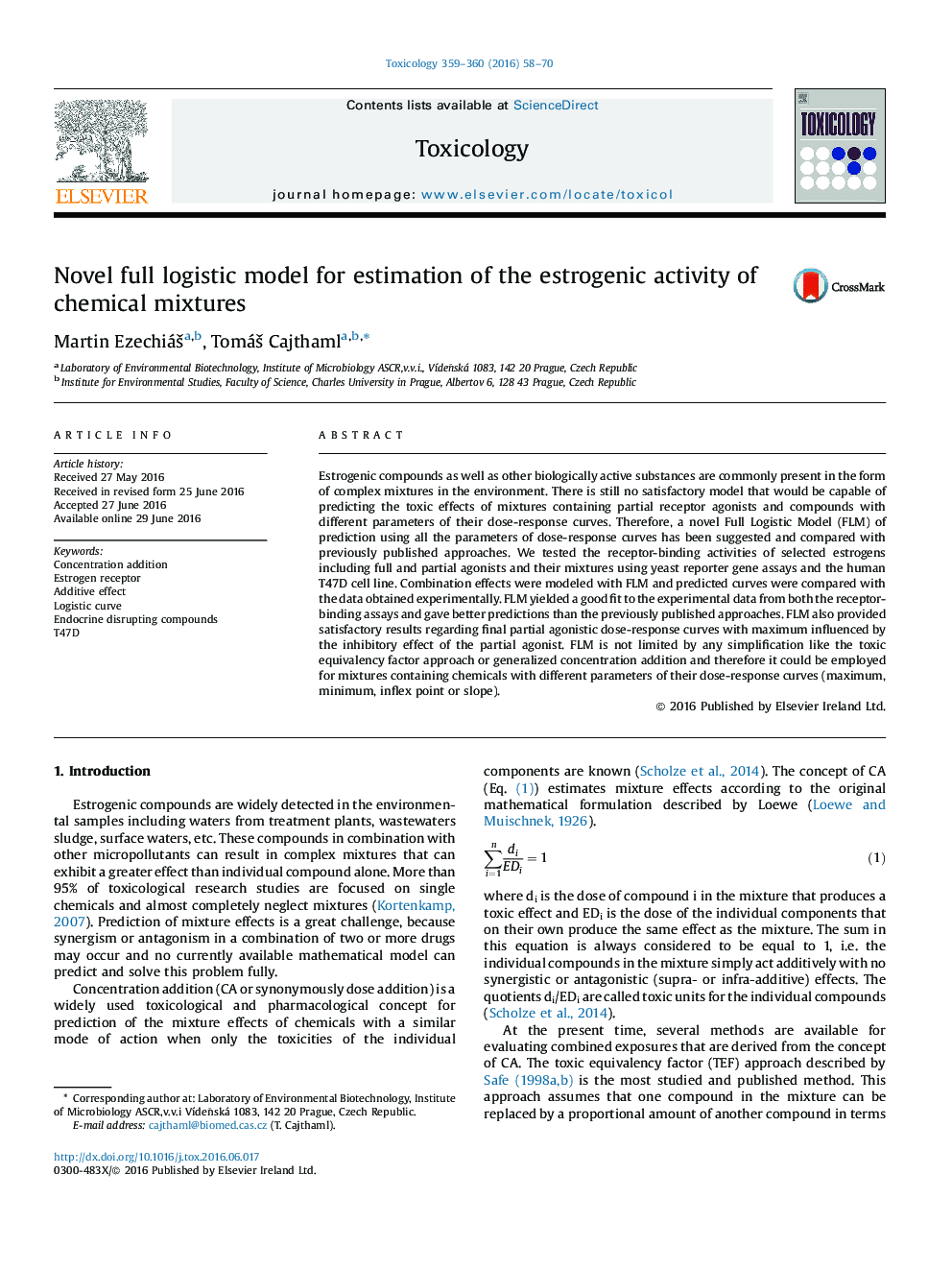| Article ID | Journal | Published Year | Pages | File Type |
|---|---|---|---|---|
| 5858923 | Toxicology | 2016 | 13 Pages |
Estrogenic compounds as well as other biologically active substances are commonly present in the form of complex mixtures in the environment. There is still no satisfactory model that would be capable of predicting the toxic effects of mixtures containing partial receptor agonists and compounds with different parameters of their dose-response curves. Therefore, a novel Full Logistic Model (FLM) of prediction using all the parameters of dose-response curves has been suggested and compared with previously published approaches. We tested the receptor-binding activities of selected estrogens including full and partial agonists and their mixtures using yeast reporter gene assays and the human T47D cell line. Combination effects were modeled with FLM and predicted curves were compared with the data obtained experimentally. FLM yielded a good fit to the experimental data from both the receptor-binding assays and gave better predictions than the previously published approaches. FLM also provided satisfactory results regarding final partial agonistic dose-response curves with maximum influenced by the inhibitory effect of the partial agonist. FLM is not limited by any simplification like the toxic equivalency factor approach or generalized concentration addition and therefore it could be employed for mixtures containing chemicals with different parameters of their dose-response curves (maximum, minimum, inflex point or slope).
